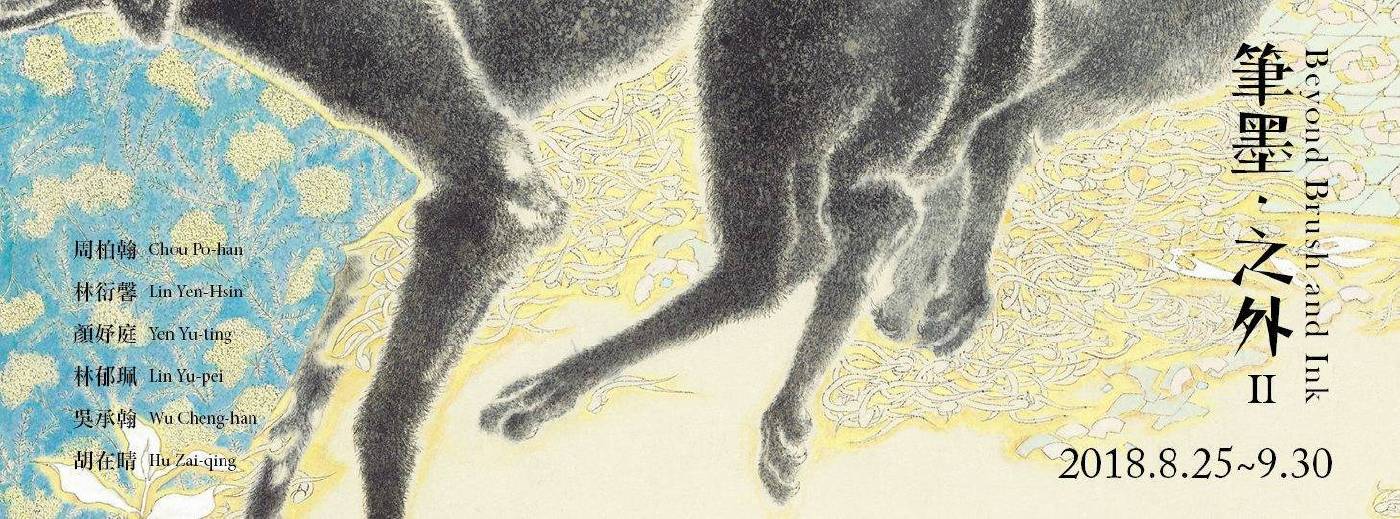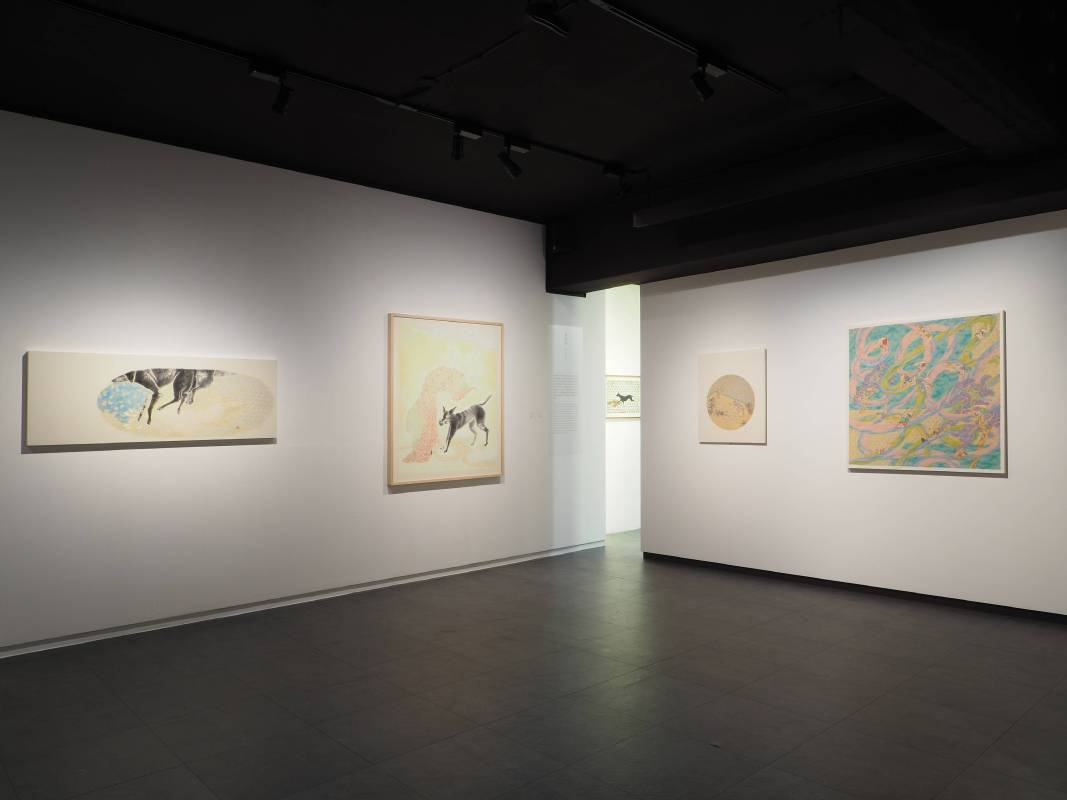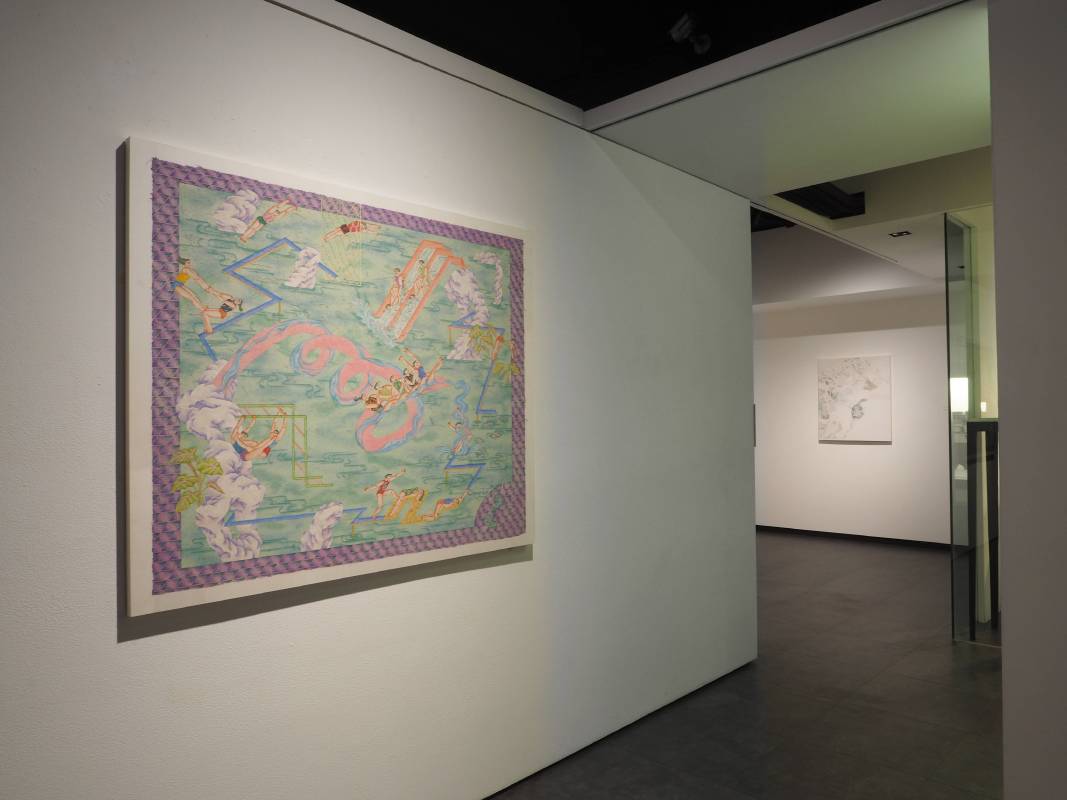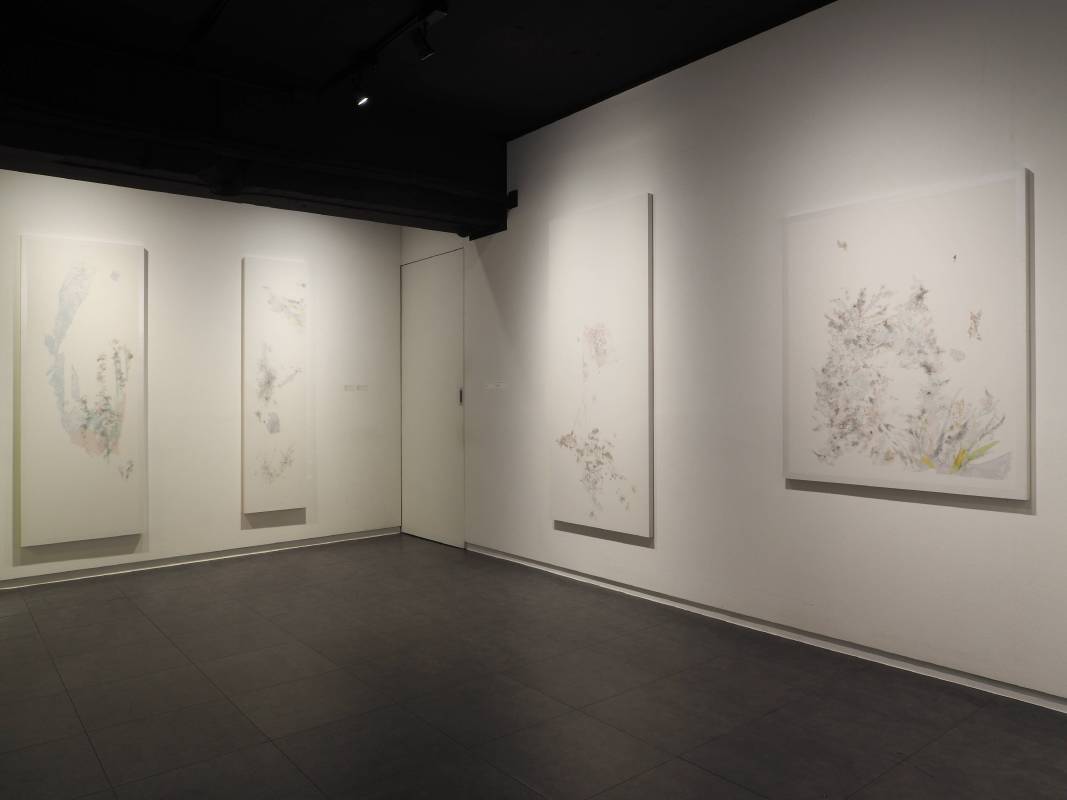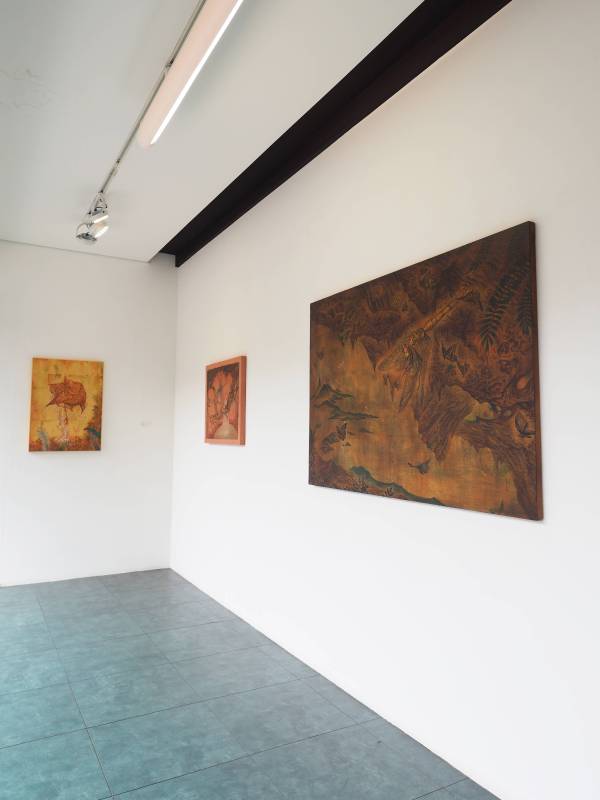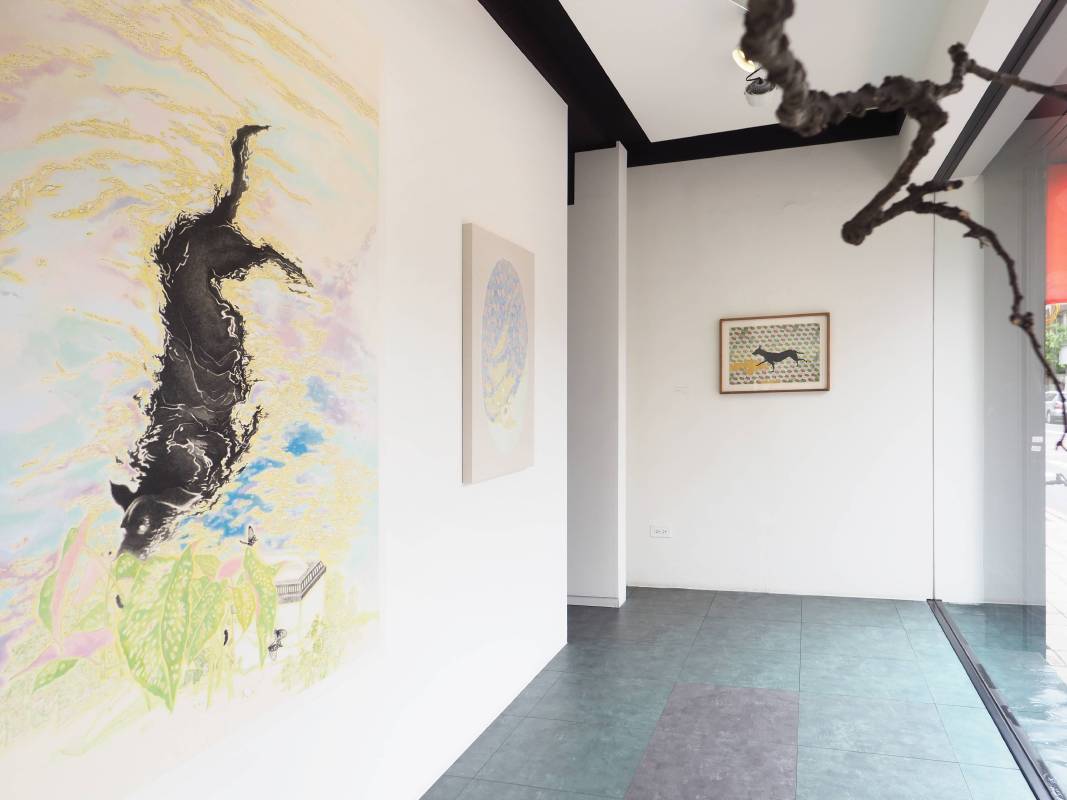赤粒藝術
【筆墨‧之外II】
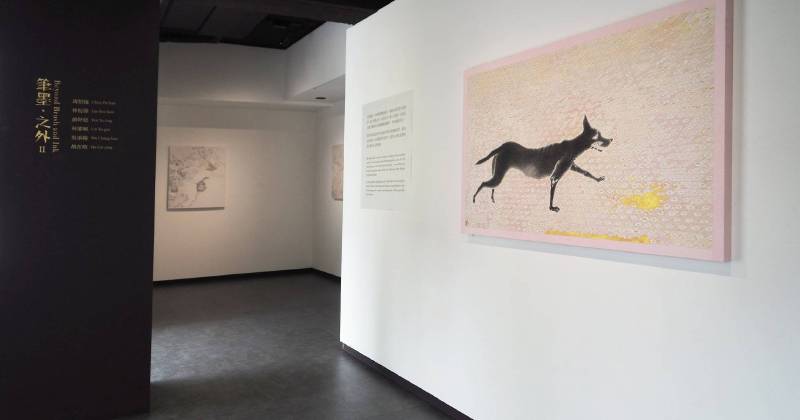
-
筆墨終結以後的台灣水墨藝術新局
文/王嘉驥
2008年,我為臺北市立美術館策劃《形.意.質.韻:東亞當代水墨創作邀請展》時,曾經提出當代水墨藝術所面臨的「後歷史情境」。此一現象,隨著台灣在1990年代以後,更徹底的本土化追求,以及台海兩岸在政治上更激化的對峙,原本位居中心的中國文化傳統逐漸離心化,甚至成為台灣教育亟欲改革的對象。
在中心與邊陲易位後的本土化訓練之下,1990年代以後生長的台灣年青世代藝術家,除非極其自覺、有心,且自發地鑽研水墨藝術的歷史,否則中國固有的傳統對他們幾乎已經堪稱遙遠。面對台灣的新現實,新生代不再憑藉中國的歷史來印證自己的身分,認同更無需透過其傳統才得以確立。
脫開與中國歷史、文化、藝術的承續關係之後,台灣當代的水墨藝術是否還有可能與可為,以及將航向何處?這是一個耐人尋味的問題。新世紀以來,全球化浪潮席捲,影像科技日新月異,網際網絡快速地改變了人類的生活、消費,以及認知世界的方式。新生代的藝術家早已遠離傳統的書寫模式。鍵盤取代書寫,毛筆不再必備,甚至是為了藝術才會使用的工具。這樣的趨勢之下,新生代的水墨創作自然而然地演變為筆墨歸於零,筆法歸於零的世紀新局。縱使還有追求筆墨或醉心於筆法者,也純屬個人的藝術選擇或美學偏好。
來到今日,再以傳統文人菁英標榜的筆墨或筆法,作為檢驗新生代水墨藝術的範式,恐怕是緣木求魚,而且失效。即使在作品中看出筆墨或筆法,也未必就具創造性及時代意義。筆墨既已終結,毛筆當然也不再是唯一、必要,而不可或缺的工具選擇。解放筆與墨的傳統疆界,拓寬紙與絹的固定用法,甚至採用西方或現代工業的材料,譬如以油彩或壓克力彩作為顏料等,這些都是現代主義時期衆多藝術家已經思考並採用過的創新手段。以此為基礎,今日新生代的水墨創作者可以朝向更多元化的媒介發展。
長成於新世紀的台灣新生代水墨藝術家,因為處於後歷史狀態,無論傳統或藝術史對他們已經失去羈限的作用,更無家派的束縛。他們不需要爭取歷史的認可,更沒有賡續或是與傳統對話的義務。他們的視野回歸到最貼近自己身體的眼前,自我的呢喃與日常的細瑣成為他們常態的主題。或者,以此作為出發點,嘗試針對社會上的一些狀況或現象,投射個人的觀感。
雖然身處日常,這些新生代的創作者往往還混雜了許多疏離於現實之外的日夢與幻遊景觀。當然,也有些創作者沿用傳統繪畫的母題與圖式,畢竟這樣的形式手段,在視覺的邏輯上相對安全,也有利於一般的閱讀;相對地,若是過於遷就傳統的慣性,難免就有偏於保守之嫌,也給人藝術家無力突破的印象。儘管如此,在挪用傳統風格的同時,不少創作者似乎也很刻意地營造一種時空跳躍的超現實之感。
邁入新世紀以來,尤其是近十年的發展,影像科技與網際網絡革新的速度尤為劇烈。新生代藝術家啓蒙於數位年代,真實與虛擬混生,無奇不有與無中生有的視覺蒙太奇,也屬於他們的當代日常。以刺激消費為導向的各種流行新時尚及次文化才生即逝,新生代人類浸潤在這樣的視覺文化當中,自然也成為他們藝術創作時的無意識之源。繽紛材質的拼湊交疊,多重時空的錯綜混搭,醞釀出新的視覺構成,離奇之中不乏許多清新的趣味。
上個世紀曾經伴隨無數少年渡過苦澀青春的日本與美國漫畫及動畫,來到新世紀以後,更因為結合了數位虛擬媒體的新技術與力量,從平面到立體,進而動態化、高清化、全球化,影響力有增無減,繼續陪伴新生代人類一起長大,甚至提供啓蒙之徑。漫畫與動畫的視覺經驗內化以後,寫入成長的記憶之區,同樣成為新生代藝術家存在結構的一部分。
水墨藝術的歷史漫長,累積達千年的筆墨體制為創作者立下了難以超越的障礙,猶如格法的迷宮。現代藝術家即使傾其畢生的洪荒之力,恐怕也難以戰勝古人,更何況是歷史語境、生活形態、創作條件早已不可同日而語的新生世代。目前看來,後歷史現象已成當代現實,傳統終結更是大勢所趨。舊體制的筆墨障礙解除之後,新生代藝術家順勢來到一片全新的創作處女地。
在此,他們相對自由,可以在工具、媒材、形式、觀念上進行各種可能的演練與部署。看似一望無垠,以天際為限,他們毫無拘限;然而,這樣的曠野又何嘗不是一處讓人舉目茫茫的另類迷宮?新生代水墨藝術家能否不迷失方位,建立座標,在行進中發覺方向,開疆闢土,構築屬於他們這一代的藝術田園?此一理想誠然可貴,具體的創新卻非容易之事。至於上述關乎歷史與傳統的種種,新生代此刻也許選擇以背相對,但也無需刻意遺忘。畢竟,典型在夙昔;有朝一日,前人的創作經驗與美學追求,還是可能為當代所用。
縱觀新世紀台灣水墨藝術的景況,學院已老,家派消亡,傳統無以為繼,歷史宣告終結。在此情境之下,水墨藝術仍有可為與否,但看新生代如何推進!
In 2008, I curated “Form, Idea, Essence and Rhythm: Contemporary East Asian Ink Painting” for Taipei Fine Arts Museum, during which I proposed that contemporary ink art is faced with a “post-historical condition.” Since the 1990s, there has been a keener pursuit of localization in Taiwan and increasingly radical political confrontation on both sides of the Taiwan Strait. In addition, the once-dominant Chinese cultural tradition has gradually been pulled away from the center, even becoming a target of reform in the educational world of Taiwan.
In the midst of advocacy for localization following the marginalization of the paradigm, the Chinese tradition seems like something in the distant past to the younger-generation artists in Taiwan born after 1990, with few exceptions who spontaneously and wholeheartedly take the initiative to study the history of ink art. In the face of a new reality in Taiwan, the young stop recognizing themselves as a part of the Chinese history, and consider their identity no longer defined by the tradition.
Is there any possibility and potential for ink art in contemporary Taiwan to thrive, after breaking away from its Chinese past, be it history, culture or art? And how far can it go? This is an intriguing question. With globalization in full swing by the beginning of the new century, the imaging technology has been developing at a breakneck pace, while the Internet is rapidly changing our ways of living, consuming, and perceiving the world. The younger generation has long forsaken the traditional mode of writing. Since clicking on the keyboard has replaced writing, ink brush is not a necessity anymore but a tool solely for art. Thus, the end of brushwork is deemed inevitable. This trend opens new vistas for the young artists.
Nowadays, it would be useless and ineffective to evaluate the ink paintings presented by the new generation based on the criteria of brushwork, long cherished by the literati elite in the traditional sense. Even if it is somehow demonstrated in their works, it does not necessarily mean that the artists have managed to infuse it with new meaning, nor the spirit of the times. As the brush and ink have come to an end, the ink brush has ceased to be the irreplaceable, indispensable means of artistic creation. The artist is encouraged to push the boundaries of traditional brush and ink, and experiment on different methods of employing the paper or silk. Western or modern industrial materials have even been adopted, e.g., oil or acrylic paint as pigment. All these ingenious approaches had been considered and put into practice by a great number of modernist artists. This has laid a solid foundation for the ink artists of the new generation to make daring attempts at more diverse media.
Born in the new century, known for its post-historical state, the young Taiwanese ink artists are no longer bound by the tradition or art history, much less the divisions between various schools. Without the need to find identity in history or continue the dialogue with tradition, they redirect their attention to issues much closer to their physical being. Both muttering and daily triviality have become common themes. Sometimes, they also try to convey their thoughts on the events or phenomena in the society.
Despite the shared themes of everyday life, the young artists often display a mixture of reality, daydreams and fantasies. Some artists opt for a more visually logical, thus more easily comprehensible, formal approach by utilizing the motifs and schemata of traditional paintings. An obsession to cater to traditional norms, however, would end up appearing too conservative, leaving the impression of a lack of innovative audacity. When adopting the traditional style, quite a few of them seem to deliberately create a surreal feel across time and space.
After the turn of the century, especially around the recent decade, the imaging technology and Internet have been developing at a phenomenal pace. The young artists are enlightened by the digital era, marked by a fusion of reality and virtuality, and strangely wondrous, fabricated visual montages, which constitute the contemporary everydayness. As the miscellany of consumption-oriented fashions and subcultures sink into oblivion in the blink of an eye, the younger generation is immersed in such a visual culture that has unconsciously inspired their artistic creations. A hybrid panoply of materials spanning time and space culminate in novel visual compositions, lending them a refreshing sense of whimsy and fun.
In the last century, the Japanese and American comics and animations had kept so many boys and girls company through their bittersweet youth. As the new century has witnessed the birth of the digital virtual media, the robust new technology has transformed the comic and animation pieces from two- to three-dimensional, making them dynamic, high-definition, global, and all the more impactful. They continue accompanying the youngsters on their way to maturity and enlightenment. The visual experiences of viewing comics and animations will be internalized and inscribed on the memory, forming an integral part of the being of the young artists.
Throughout the long history of ink art, the system of brushwork established for over a thousand years has imposed severe limitations on the painters, trapping them in a dogmatic labyrinth. While the modern artists find themselves unable to break the ancient spell despite lifelong efforts, let alone the younger generation who are immersed in a totally different historical context and lifestyle with unprecedentedly miscellaneous creative resources. Since the post-historical phenomenon has now turned into a contemporary reality, the tradition will reach an end someday, sooner or later. There is a whole new world awaiting the young artists with the breakdown of the old mechanism of brush and ink.
In this new world, they are relatively free to maneuver and try all possibilities with a kaleidoscopic plethora of tools, media, forms, and concepts. Under the seemingly boundless canopy of the sky, they appear to be all-powerful without any shackle. Will a mesmerizing, uncultivated wilderness like this lead to another maze of endless bewilderment? Can the new generation navigate this labyrinthine odyssey through difficulties without getting lost, and create an artistic homeland at long last? It is an ideal to be exalted, but they need to move mountains to make new ideas come true. As the young might strive to break ties with the history and tradition, I do not see it necessary to forget about the past. The paradigms the predecessors have set cannot be erased. Someday in the future, the young can still benefit from referring to the artistic experiences and aesthetic achievements of old.
Amid the Taiwanese art world of ink painting in the new century, orthodoxy seems outdated and demarcation of schools has broken down; both the tradition and history fade away. Under these circumstances, are there opportunities lying ahead for ink art to grow? Only the new generation can make it happen. Let’s see.
推薦展覽
view all赤粒藝術
【存在的鳥—A Bird in its Existence、無常—Impermanence】中村一美Kazumi Nakamura、石川順惠Yukie Ishikawa
日期:2023-07-08 ~ 2023-08-27|台灣,台北市

